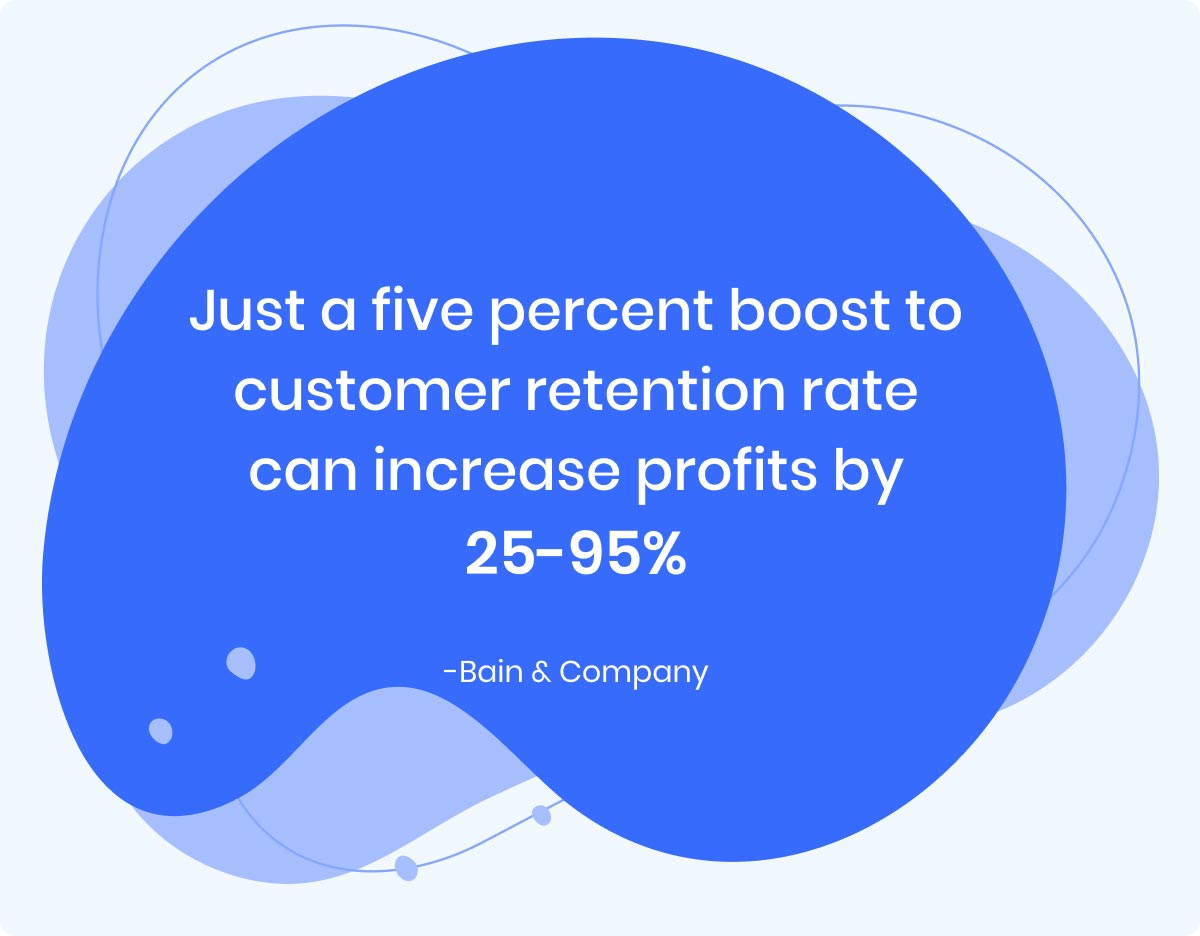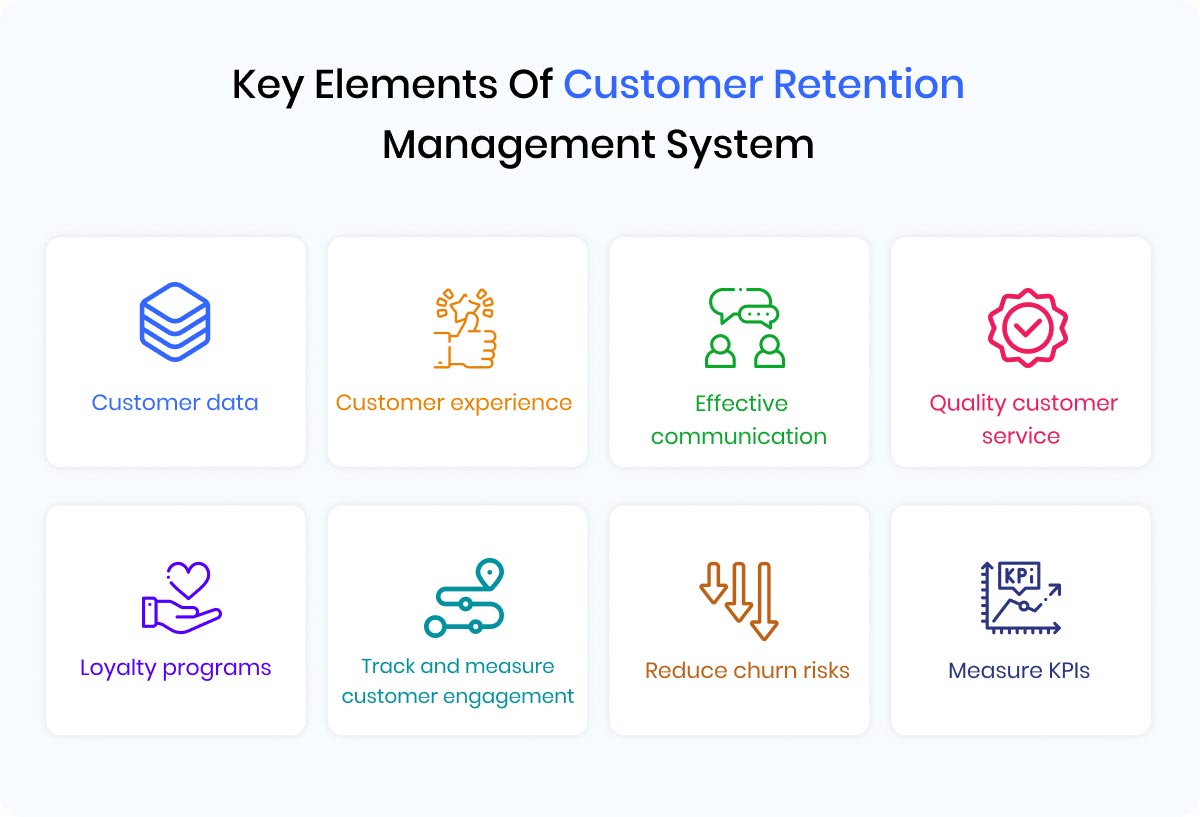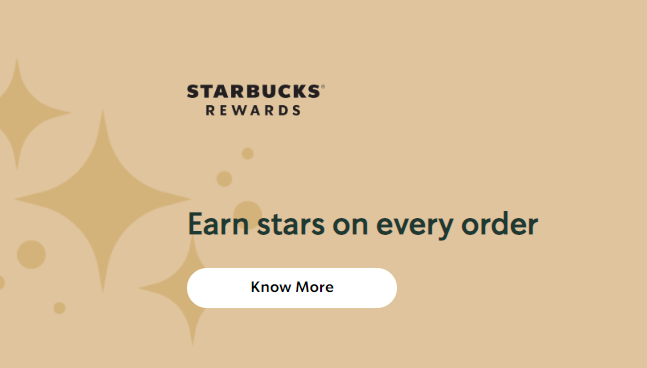What is Customer Retention Management: A Detailed Guide
- November 7, 2023
- 16 mins read
- Listen

Customer retention was easy back then. Expectations were low, so businesses did not face many issues in fostering loyalty with customers. Satisfied customers often stuck with the business and this ensured a reliable revenue stream over time.
The scenario has changed now.
Today, customers are quite evolved. They have abundant choices and information at their fingertips. If they are not happy, or if their experience with a business is not good, they will immediately leave and switch over to competitors.
To avoid reaching that point, a business needs to focus on customer retention management which is a strategic approach to retaining and nurturing existing customers. The purpose is to build lasting relationships with customers, encourage them to make repeat purchases and win brand advocates.
A business that implements a customer retention management system has to spend less on retaining existing customers as they don’t have to put resources into acquisition. This is why more companies now focus on keeping their customers happy so that retention is never an issue.
In this blog, we will discuss why customer retention is important, and understand customer retention management, its system, platform, and other key aspects.
But first, let’s get started with understanding what exactly customer retention management is…
What is Customer Retention Management?
Customer retention management is a strategic approach (and actions) a business takes to encourage customers to stay loyal to them over a long period of time. It also encompasses a set of practices aimed at fostering long-term relationships with customers.
In addition, customer retention management is also the process of managing customer satisfaction and customer experience efforts so that the acquired customers stay with the business for a long time. It’s an ongoing process that is driven by a customer retention strategy.

The primary goal of customer retention management is to –
- Keep customers engaged
- Keep customers satisfied
- Keep customers loyal
- Keep customers for a long-term
Management of customer retention is important as it encourages customers to continue doing business with your company and become advocates for your products and services. It’s also one of the most effective methods of meeting customer needs. All this could be central to a business’s growth and profitability.
Why is Customer Retention Important?
Customer retention has a big impact on the growth and profitability of a business. The more customers a business retains, the more profitable it will stay. In fact, Harvard Business Review estimates that acquiring a new customer is 5 to 25 times more expensive than retaining an existing one.
If that statistic was an eye opener, figure this out from Bain & Company – just a five percent boost to customer retention rate can increase profits by 25-95%.
But how does customer retention impact profit, you must be wondering?
Well, it’s due to the increased customer lifetime value (CLV) as the longer a customer stays with your business, the more he/she will spend, therefore increasing the profit.

What’s more, compared to new customers, existing ones spend 31% more which shows the value of investing in efforts to retain customers. Such customers are also more likely to try new products without showing the reservations that new customers often have.
Further, retained customers become loyal and they are more likely to recommend your product, service, or brand to others. That’s why your business should know how to measure customer retention as it contributes to growth.
That apart, an effective customer retention program is important for other reasons as well, including –
- It reduces churn rates and ensures a more stable customer base
- Retained customers are less likely to be influenced by competitors
- Data and insights from retained customers can contribute to product development
- A good retention rate ensures sustainability for the business
Key Elements Of Customer Retention Management System
For a business, keeping existing customers engaged and happy should always be a foremost priority if it wants to increase its retention rate. However, it takes efforts at all organizational levels to keep customers satisfied and loyal. In fact, there are various elements that come together to make a successful customer retention management system for a business. These elements include –
- Customer data – The data and insights you have about your customers are often the pillars of a successful retention management strategy. This data is key to devising effective retention strategies.
- Customer experience – Customers value experience a lot and they show loyalty toward a brand that offers them personalized experiences through stages of their journey.
- Effective communication – Engaged customers are more likely to be retained. Regular and meaningful communication is a vital element of customer retention.

- Quality customer service – A business that offers exceptional customer service and is ready to support customers with timely help is likely to have more loyal customers than others.
- Loyalty programs – Giving customers a timely incentive to stay engaged and do repeat business with your company is key to retention strategy. These programs can come in different forms such as discounts, coupons, exclusive benefits, etc.
- Track and measure customer engagement – Not all customers are beneficial for the business as some are definitely more valuable than others. The key is to monitor “at-risk” customers and identify ‘highly convertible” customers for more effective engagement.
- Reduce churn risks – A business can leverage data and analytics to identify potential churn risks and then take proactive steps to minimize customer attrition.
- Measure KPIs – Measuring key performance indicators (KPIs) is essential to understanding the effectiveness of your customer retention strategies. Some of the KPIs to measure include CLV, churn rate, and retention rate.
Tracking Key Metrics for Customer Retention Management
Monitoring and analyzing key metrics is key to effective customer retention management. It helps you better understand customer behavior, satisfaction, and engagement. When you regularly analyze and monitor these metrics, you will get deep insights into your customer retention efforts.
Let’s look at some of the key customer retention metrics for retention management –
- Customer retention rate – Customer retention rate measures the percentage of users retained over a specific period, or the percentage of users who continue to stick with you after their first purchase. A higher retention rate shows higher profitability for your business.
- Customer churn rate – It measures the percentage of customers who stop using your product or service for a given period. When the churn rate is high, it indicates potential issues with your product or service satisfaction.
- Customer lifetime value (CLV) – It shows the total revenue earned from a customer throughout their entire relationship with the business. This metric is key to determining the value of retaining a customer and ensuring resource allocation in the right ratio.
- Net promoter score (NPS) – This metric is essential for measuring the probability of customers recommending your products or services to others. A higher NPS shows better customer satisfaction and loyalty.
- Customer satisfaction (CSAT) score – This metric offers insights into the immediate customer perception of your product or service. It is used to measure the satisfaction level after a specific transaction or interaction.
- Repeat purchase rate – It’s a key metric that measures the percentage of customers who make repeat purchases from your business over a specific period. This metric is a key indicator of customer loyalty and satisfaction.
How to Build a Retention Management System?
Building a customer retention management system is an ongoing process and it requires a strategic approach. Apart from being systematic, you also need to adopt a customer-centric mindset and rely on data-driven insights.
Here are the steps involved in building a retention management system –
Step 1 – Define your retention goals
Step 2 – Segment different customers and make your retention strategies align with each segment
Step 3 – Gather customer data and analyze it to understand their behavior and preferences
Step 4 – Centralize the customer data by using tools like customer relationship management (CRM) software
Step 5 – Identify and determine the key KPIs and metrics that match your retention goals
Step 6 – Implement customer feedback mechanisms to gauge customer sentiments and identify key areas for improvement
Step 7 – Focus on creating personalized experiences to meet individual customer preferences
Step 8 – Incentivize repeat purchases through well-designed loyalty programs
Step 9 – Set up automated communication workflows based on historical data and customer preferences
Step 10 – Engage in A/B testing to continuously test and optimize different retention strategies
Step 11 – Bolster retention management efforts successful with cross-functional collaboration
What are Customer Retention Management Frameworks?
Customer retention management frameworks are structured approaches to develop and implement customer retention strategies over the long run. They provide businesses with a strategic approach to building and maintaining long-term relationships with their customers. The use of these frameworks is very helpful in understanding, engaging, and retaining the existing customer base.
Let’s look at the key elements of customer retention management frameworks –
- Collecting and analyzing customer data to gain insights for effective retention strategies
- Segmenting customers based on behavior or characteristics to personalize retention strategies
- Identifying, defining, and monitoring KPIs to measure the impact of retention efforts
- Customizing marketing communication and messages to enhance the rate of engagement
- Rewarding customer loyalty through loyalty programs
- Mapping the entire customer journey to understand customer pain points
- Monitoring market trends to adapt to industry changes
- Integrating technologies to streamline customer data management
Popular Customer Retention Management Software Platforms
Retaining customers is key to the growth and success of a business. That’s why more businesses have started using customer retention management software platforms to bolster their retention strategies. These software platforms can help collect, organize, and analyze user data for insights and actions in retaining customers. Some of the popular ones include –
Salesforce
Salesforce is one of the most popular and versatile software for customer retention management. It comes with a range of tools and features that make it ideal for retaining and managing customer relationships.
Key features
- A comprehensive customer data management to store and organize customer data
- Features to segment customers on different criteria and then personalize marketing efforts
- Marketing automation features to create and execute targeted marketing campaigns and engage with customers
- Tools to manage sales pipeline and track leads
- Customer insights through powerful reporting and analytics capabilities
2. Zendesk
While Zendesk is primarily not a customer retention management software platform, it has tons of useful features and tools for supporting a business’ customer retention efforts. Using this software platform, a business can provide prompt customer support and track customer issues and inquiries.
Key features
- Omnichannel support across various channels
- Survey and feedback features to gather customer insights and opinions
- Reporting and analytics to track key support metrics
- Easy integration with CRM systems, software, and automation tools to get a holistic view of customers
3. Hotjar
Hotjar is basically a customer experience and feedback tool that can provide insights into customer behavior and preferences and therefore support a business’ retention efforts. This tool is very powerful when it comes to getting actionable insights into user behavior and challenges.
Key features
- User behavior analytics to help businesses make improvements to customer experience
- Tools to collect on-site customer surveys
- Conversion funnels to track user journeys on a website
- Feature to create targeted surveys
4. Userpilot
Userpilot does not help in customer retention management directly but can play a role in boosting retention efforts by improving the onboarding experience. It’s a tool that businesses can use to increase user engagement and ensure an effective onboarding experience for them.
Key features
- Tools to create and customize onboarding experiences
- Proactive use engagement by creating in-app messages, tooltips, and checklists
- Personalize the user experience through user behavior analysis and segments
Customer Retention Programs From the Industry
Customer retention is always a big priority for businesses cutting across industry verticals. After all, retention drives revenue and lends sustainability to the business. That’s why companies focus a lot on improving their retention efforts through various programs. Here is a list of some popular customer retention programs adopted by brands from different genres –
1. Starbucks’ highly successful customer loyalty program
When we talk about a popular loyalty program, Starbucks comes to mind instantly. Its rewards program has been a huge success and is also much admired by customers. The program has not only contributed to customer retention but has also ensured significant revenue for the company.

Starbucks Rewards is a mobile-app-based loyalty program that aims to reward customers for purchases at the company’s stores. A customer can create an account to join the program and then start earning “stars” for every purchase they make. The more stars a customer collets, the higher rewards and benefits he/she can get.
Convenience is a key reason that makes this program wonderful as customers can order and pay for their food and drinks easily via mobile app. Plus, Starbucks offers personalized promotions by using customer data from the app and this is loved a lot by customers.
2. Nike’s powerful omnichannel customer service approach
Nike is a brand that understands how bad customer service can jeopardize all its retention efforts. It also realizes the value of meeting high customer expectations in the digital age and ensuring value as and where needed. That’s why the company has adopted an omnichannel approach to make its customer service more “approachable” to customers.
For a top global apparel brand like Nike, the focus is always on building a meaningful customer relationship which is not possible unless you are where your customers are in terms of offering service. This approach ensures great experiences to customers and this is where Nike stands apart from others.
Its omnichannel approach considers “user location” to recommend products and help customers find nearby Nike outlets. While it offers traditional support, it also merges the real with the digital world to help the way customers want.
For example, Nike has a dedicated support account on Twitter to answer queries of customers and respond to their complaints. This kind of approach has helped not only offer amazing support but also retain most of its customers.
3. Ikea’s incredibly interactive educational content
When customers are educated and informed, they make good choices. So, businesses that make an effort to educate their customers are more likely to retain their customers than others.
Ikea is a good example of how to use the power of content to educate your customers, empower them, and let them understand your products and services better.
This giant furniture company has a long list of loyal customers who benefit from interactive content and choose the best furniture for their needs and specifications.
Its educational tool not only helps with the selection of furniture but also focuses on how to assemble them in tune with the specific dimensions and sizes of the room or floor. The interactive design tools on its website help customers visualize the product in any given space or home.
In addition, it has tons of video tutorials on YouTube and on other platforms to ease the assembly process with its products. These measures help Ikea improve customer experience with their brand and retain them over time.
4. Lululemon’s community for customers
Lululemon is a well-known athletic apparel brand that knows the power of the customer community in boosting retention rates. It looks to engage the customers through its “Sweat Collective” program that not only offers exclusivity to customers but also discounts, and opportunities for connection.
Its program is for an exclusive community for fitness instructors, athletes, and yoga teachers who receive a host of benefits such as product discounts, early access, and tons of educational content. Apart from that, the company also hosts events and gatherings so that its members can network connect, and feel a sense of community.
The Sweat Collective Program has helped Lululemon boost retention by making customers feel valued for their commitment to an active lifestyle and choices. Similarly, exclusivity and recognition encourage customers to make repeat purchases and stay loyal for long.
Enhance Your Customer Retention Management Strategy with REVE’s Tools
Retaining customers is an ongoing process and it requires continuous effort. Your business can retain customers only when you engage them better and provide great experiences.
We, at REVE Chat, understand the value of customer engagement and that’s why we offer a whole host of quality tools to help businesses engage customers better.
Our AI-powered chatbot can automate a variety of tasks across sales, marketing, and support. You can deploy a chatbot on your website and start providing quick answers to customer queries.
Further, we have video chat software and co-browsing software for visual support. These tools ensure the kind of help customers expect from a business.
Similarly, we have live chat software that can be paired with the chatbot to offer hybrid support experiences to customers.
Final Thoughts
Happy and engaged customers are more likely to be loyal to your business. Such customers happen when a business has a proper retention strategy in place.
At REVE Chat, we understand the need to engage well with your audience, serve them well, and ensure amazing experiences at each stage of their journey with your brand.
We have some really amazing customer engagement tools to help your business achieve its retention goals.
So, you can sign up with us and check our tools and see how they can be a great value addition to your customer retention management efforts.



